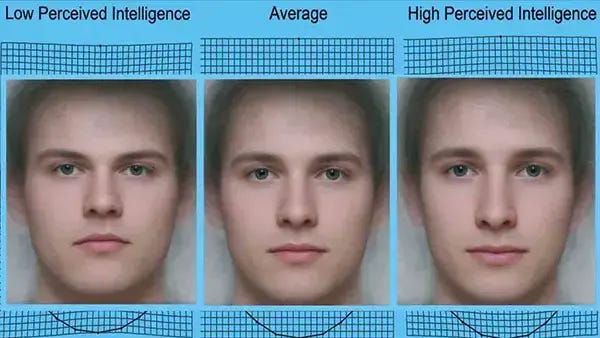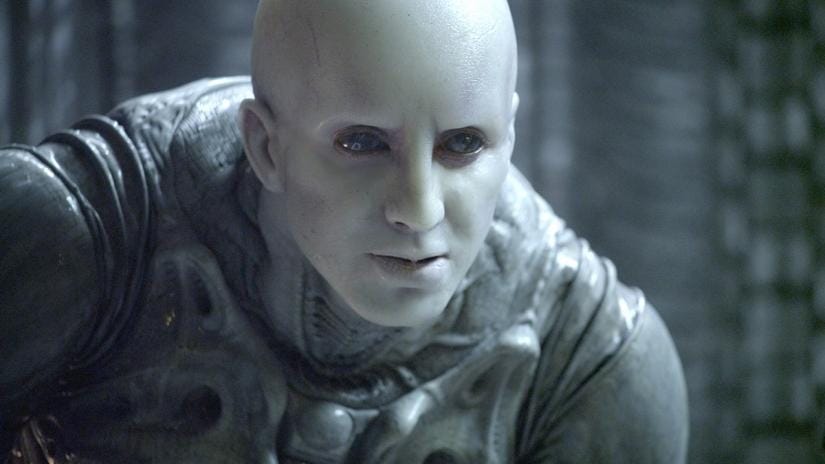“Every human face is a hieroglyphic, and a hieroglyphic, too, which admits of being deciphered, the alphabet of which we carry about with us already perfected. As a matter of fact, the face of a man gives us a fuller and more interesting information than his tongue; for his face is the compendium of all he will ever say, as it is the one record of all his thoughts and endeavors.” - Arthur Schopenhauer, On Physiognomy
Physiognomy (from the Greek φύσις, 'physis', meaning "nature", and 'gnomon', meaning "judge" or "interpreter") is the practice of assessing a person's character or personality from their outer appearance—especially the face.
Blogger
recently made a throwaway reference to professor Edward Dutton’s book “How to Judge People by What They Look Like”, which inspired this post. Rolo was making a point regarding Russian nationalist and Donbass hero Alexander Zacharchenko, who looked like this:Zacharchenko was assassinated on the orders of Russian oligarch Serhiy Kurchenko, who looks like this:
The assassination was part of Russia’s oligarch’s goal to keep Russian nationalists and populists under heel so they could continue their unlimited graft and rape of the country.
The photo of each of these individuals says it all, doesn’t it? You can see the directness, seriousness, honesty and integrity and the serious burden of command in the photo of Zacharchenko, or in any photo of him; you can use a search engine for more. See this composite of Julius Caesar for a similar look:
And you can see the crookedness, nastiness, lack of morals and abject, scary insanity in a glance at the photo of Kurchenko; mostly in the extremely weird mouth expression along with the eyes (with apparently no eyelids) staring unfocused and blankly in two different directions. Insane congressman Adam Schiff has a similar stare:
Horrible New Jersey Governor Murphy, previously covered in this post which contrasted Ian Smith’s courage against Murphy’s craven advancement of the globohomo agenda, isn’t too far off either:
Anyway, physiognomy is a subject that I’ve referenced in passing many times. But I havn’t delved into the topic itself yet, so now is a good opportunity.
Whether you want to acknowledge it or not, we all come to immediate judgments about other people when meeting or observing them. Are they friendly or serious looking? Do they present themselves well or look slovenly? Do they look dangerous, do they look like a criminal, are they beautiful or ugly, are they tall or short, fat or skinny, strong or weak, do they appear fat or stupid, rich or poor, healthy or sick, are they well coordinated or clumsy, are their faces and bodies symmetrical or asymmetrical? Each of these traits says something about the character of the person being judged. Someone fat, for example, would generally be presumed to have less impulse control, shorter future time-orientation, is less healthy, worse genetics, at risk of other diseases such as diabetes and heart disease, probably eats unhealthily, etc. You can make all sorts of judgments at a glance about a person, to which wonderful poet Ezra Pound agrees.1 One study shows that it only takes a tenth of a second for a person to make a judgment of another person’s personality (Willis et al., 2006). Clique theory makes the same argument where one can tell instantaneously whether a person falls within Jock, Prep, Nerd, Scumbag or Loser clique.
Now, sometimes one’s judgments are wrong; we aren’t perfect and it’s good to get to know someone before basing decisions off of gut instincts. Perhaps we were wrong in our impressions and we can grow and update our own internal models. But often times we are in situations where we do have to make a snap decision; is the person approaching us on the street in the middle of the night dangerous or not? And even though not perfect, making those instantaneous judgment calls in such situations can mean the difference between an ugly incident or avoiding trouble.
Background
Acknowledging that everyone makes instantaneous judgments of others is declasse in the modern era; it smacks of recklessly rushing to judgment, or if in a racial context it smacks of racism. So the entire study of physiognomy has been mothballed, deemed low class pseudoscience and with low or no funding directed to the study of it, at least until the modern era (which we will get into). Per Dutton:
Unfortunately, physiognomy became associated – and, perhaps, remains associated – with phrenology, [which] was the belief that the nature of a person’s character can be discerned by small differences in the shape of their skull. As the brain is an organ, and different parts of the brain have different functions, it seemed to follow that bumps or indentations in the skull would reflect similar properties in the brain. As such, people could ‘have their lumps felt’ and it would reveal a great deal about the nature of their personality; albeit based on the very limited nineteenth century knowledge of brain modules. Phrenology became hugely popular in the late eighteenth and early nineteenth centuries, with the establishment of learned phrenology societies [and as popularly mocked in Quentin Tarantino’s Django Unchained]….Unsurprisingly, phrenology was debunked. Physiognomy found itself (intellectually) guilty by association.
It fell further out of favor after the Nazis applied the practice on a racial basis:
“The other problem physiognomy has to deal with is the obvious unpleasant consequences judging people by their appearance has when it comes to the issue of ‘race.’….The Nazis measured facial features in order to determine the archetypal ‘Jew’ and the archetypal ‘Aryan,’ giving the measurement of facial features for any broader purpose a bad name. But the actions of the Nazis are entirely irrelevant. As we will see shortly, physiognomy works, in most cases, within races.”
As the egalitarian ratchet effect continues its parabolic ascent, it has increasingly become more and more outside the bounds of discussion that people are inherently different. How mean of you to not just point out but consider in the first place that a person is short, or ugly, or dresses poorly, or seems dangerous or dumb! You should feel guilty for any judgments you make of others unless officially approved experts tell you it is okay to do so. How dare you. We are all interchangeable widgets with the exact same abilities and outlooks except for societal racisms holding back the downtrodden, okay?
Modern science
Scientific research into physiognomy has undergone a bit of a revival in the late 20th/early 21st century, according to Scientific American in an article called “How your looks betray your personality.” It states: “The field is undergoing something of a revival. Researchers around the world are re-evaluating what we see in a face, investigating whether it can give us a glimpse of someone’s personality or even help to shape their destiny. What is emerging is a “new physiognomy” which is more subtle but no less fascinating than its old incarnation.” The article continues: “First impressions are highly influential, despite the well-worn admonition not to judge a book by its cover. Within a tenth of a second of seeing an unfamiliar face we have already made a judgement about its owner’s character – caring, trustworthy, aggressive, extrovert, competent and so on (Psychological Science, vol 17, p 592). Once that snap judgement has formed, it is surprisingly hard to budge. What’s more, different people come to strikingly similar conclusions about a particular face – as shown in our own experiment (see “The New Scientist face experiment”).”
Per Schopehauer, “The study of physiognomy is one of the chief means of a knowledge of mankind, because the cast of a man's face is the only sphere in which his arts of dissimulation are of no avail, since these arts extended only to that play of feature which is akin to mimicry.” Let’s tabulate some of the recent science of physiognomy, some of which is from the Wiki entry:
Facial features impact on power, warmth, honesty, intelligence. Per The Psychology of Personnel Selection, research in the 1990s indicated that three elements of personality in particular – power, warmth and honesty – can be reliably inferred by looking at facial features: “More recent research suggests that face-based impressions may sometimes be valid (Berry, 1991; Zebrowitz, Voinescu & Collins, 1996). Berry (1990) asked students to report their impressions of their classmates (after one, five and nine weeks of the semester had elapsed), and used these impressions as the criterion with which she compared independent evaluations of the classmates’ photographs. She found significant correlations between peer and photographs on three dimensions: power, warmth and honesty.”
Other studies have used AI and machine learning techniques to identify facial characteristics that predict honesty, personality, and intelligence. In a 2006 study published in the peer-reviewed journal, Social Cognition, Ian Penton-Voak and colleagues utilized both individual and composite facial images. The composites were generated by computer software that combines multiple faces into one; you might think of it as a sort of “average” of the images. More specifically, the composites incorporated facial images of those scoring in the top ten percent for each of the Big Five personality domains. Based on their findings, the researchers concluded that there is at least “a kernel of truth” to be found in the practice of face reading.
In a 2014 research article “Interpretation of Appearance: The Effect of Facial Features on First Impressions and Personality”, the authors generated artificial, extreme faces visualising the characteristics having an effect on first impressions for several traits. Conclusively, they found a relationship between first impressions, some personality traits and facial features and conclude that people on average assess a given face in a highly similar manner. The following images for each personality trait show a composite with a very low score for that trait on the left, and a very high score on the right:

“For each face pair the left extreme face is predicted as being judged very low for a given trait and the right face as very high. Each face is based on the β-coefficients from the best linear regression model for that given Rating and gender. We generated the faces by multiplying each β-coefficient to either +4 standard deviations or -4 standard deviations of the matching facial component. Bodily asymmetry affect on health and IQ. Per The Psychology of Personnel Selection, p. 16: “That said, there is currently a good deal of interest in related topics like fluctuating asymmetry and digit ratio. Fluctuating asymmetry consists of within individual differences in left- vs right-side body features (length of ears, fingers, volume of wrists, etc.). Asymmetry is associated with both ill health and lower IQ. In a recent study, Luxen and Buunk (2006) found 20 per cent of the variance in intelligence was explained by a combined measure of fluctuating asymmetry.”
Digit ratio impact on aggression. P. 16: “The 2D:4D digit ratio has been known for some 100 years and has recently attracted a great deal of attention. The idea is that a person’s hand shape – particularly the length of these two digits – is determined by physiological processes in the womb which influence the sex-linked factors (Brosnan, 2006). In line with this view, a seminal study by Lippa (2003) showed that 2D:4D determined sexual orientation (though only for men). Subsequent studies in this area have attempted to link 2D:4D to individual differences in established personality traits, notably those related to aggression or masculine behaviours. Although evidence has been somewhat inconsistent, a number of meaningful connections have indeed been found. In a large-scale study, Lippa (2006) found positive, albeit weak, associations between 2D:4D and Extraversion, as well as a negative, albeit weak, link between 2D:4D and Openness to Experience. Overall, however, associations between finger-length measures and personality were modest and variable.”
Extraversion, conscientiousness and openness via facial analysis. Per the New Scientist article, “There is, however, some tantalising evidence that our faces can betray something about our character. In 1966, psychologists at the University of Michigan asked 84 undergraduates who had never met before to rate each other on five personality traits, based entirely on appearance, as they sat for 15 minutes in silence (Journal of Personality and Social Psychology, vol 4, p 44). For three traits – extroversion, conscientiousness and openness – the observers’ rapid judgements matched real personality scores significantly more often than chance….when Little and Perrett re-ran the experiment using mugshots rather than live subjects, they also found a link between facial appearance and personality – though only for extroversion and conscientiousness (British Journal of Psychology, vol 98, p 111).”
Tendency to violence based on wider faces. “Support for this, and the kernel of truth idea, has come from a study of 90 ice-hockey players published late last year by Justin Carré and Cheryl McCormick of Brock University in Ontario, Canada. They found that a wider face in which the cheekbone-to-cheekbone distance was unusually large relative to the distance between brow and upper lip was linked in a statistically significant way with the number of penalty minutes a player was given for violent acts including slashing, elbowing, checking from behind and fighting (Proceedings of the Royal Society B, vol 275, p 2651).” Per Slate, researchers have claimed that it is possible to predict upper body strength and some personality traits (propensity to aggression) only by looking at the width of the face. University of California-Santa Barbara psychologist Aaron Sell reported that college students could accurately estimate the upper body strength of unfamiliar men after viewing their faces alone. Sell suspects the brow ridge and jaw, two structures that are shaped by testosterone in puberty. (High testosterone has been linked with masculine looks as well as with aggression.)

Political orientation based on one’s face can be reliably predicted. In a study that used facial recognition technology by analyzing the faces of over one million individuals, political orientation was predicted correctly 74% of the time; considerably better than chance (50%), human ability (55%) or even personality questionnaires (68%).
Sexual orientation based on one’s face. In 2017, a study claimed that an AI algorithm could detect sexual orientation more accurately than humans (in 81% of the tested cases for men and 71% for women).
Eye width and perceived intelligence. Eyes are the “windows to the soul” and are often one of the first facial features people notice. For instance, there is a significant relationship between interpupillary distance (wide-set eyes) and perceived intelligence (Lee et al., 2017).
Mouth width and leadership abilities. One study noticed that the mouth width impacts people’s choice in leaders (Re et al., 2016). The study applied their findings to real leaders. The study found that mouth width correlates to the CEO’s leadership abilities and their actual leadership success. Additionally, the same study notes that people with wider mouths were more likely to win U.S. Senate elections.
Tattoos suggest sexual promiscuity. One study gathered data on 450 college students and found that tattooed respondents were more likely to be sexually active than those without tattoos (Koch et al., 2006). Another study found that people who got body modifications (tattoos, piercings, etc.) were more likely to engage in intercourse earlier in life and be sexually active (Nowosielski et al., 2012). According to the study, adults who got body modification are four times less likely to engage in religious practices.
Potential explanations
Per Kosinski (2023), the potential explanations for people’s personality traits being reflected in their physiognomy are (1) self-fulfilling prophecies, where people’s judgments on other’s looks eventually turn the subjects from repeated social interactions into what others are perceiving; (2) psychological traits may modify physical characteristics; and (3) there may be genetic correlations between certain traits being expressed, such as twin studies which have found that genes are responsible for over 50% of the variation in both facial features and political orientation.
With respect to the self-fulfilling prophecy possibility, it brings to mind the “Millimeters of Bone” incel meme, which argued that the difference between Chad and Melvin was only a few millimeters of bone:
It can be argued that repeated positive social interactions for the version on the right compared to the version on the left would result in much higher extraversion for the Chad, for example, because of the more positive results from such interactions. The closer one’s face is to the golden ratio, generally the more positive interpersonal connections will be. This relates to the expression, “Physiognomy is destiny”…
It is an open question the impact to which a conscious decision to think or act in new ways has on one’s physiognomy; exercise more and you’ll be in better shape, have a calmer disposition, stand straighter, weigh less etc. which will impact the way others see you. Plastic surgery may hide one’s physical attributes, while also revealing to the world via a changed physiognomy one’s underlying narcissism, shallowness, and emotional instability.
With respect to the second and third possible explanations, as covered previously, using artificial selection to select for specific traits in animals results in very specific physiognomy changes, such as domestication syndrome. Domesticated animals tend to be smaller and less aggressive than their wild counterparts, they may also have floppy ears, variations to coat color, a smaller brain, and a shorter muzzle. When Dmitry Belyayev domesticated a fox within a human lifetime via a rigorous artificial selection program, even though he only selected for one trait - tameness - selection for that trait affected other traits such as coat color, skulls shape, and ear floppiness. Given this, it makes sense that there would be a similar interplay between personality traits and physical traits in humans.
Conclusion
The point of this article is it’s perfectly natural to make snap judgments of others; we all do it unconsciously and instantaneously, and all one does by trying to deny it is create some sort of hypocritical split within us, a denial of self (which always manifests one way or another). There are circumstances in which acting on our snap judgments is perfectly legitimate and applicable, especially when in a situation where we have to make such judgments quickly; for others where we don’t have to rush to judgment, it is better to reserve judgment, talk to the person and see if one’s intuition and immediate judgments were accurate or false. In my articles you’ll often see me describe a situation and point to a person’s physiognomy as evidence in favor of the point being made, and hopefully this post does a decent job of describing why.


I love the physiognomy of the represented Overman engineer in the movie Prometheus. The above scene is a deleted extended scene that should have been included in the theatrical version, and it’s an abomination that it wasn’t. For a fascinating look at how the design of the engineer was developed, which was intended to be a blend of Michelangelo’s statue of David, da Vinci’s work, the Statue of Liberty, and Elvis (lol), see this great behind-the-scenes clip here.

More fundamentally, there is an extremely deep-seated element in the nihilistic West that it is improper to follow one’s senses and gut judgments, that we must discount what we see with our own eyes in favor of believing officially designated “experts” and whatever nonsense they push. As argued previously, science has been replaced with policitized and corrupted Scientism, and one should make a conscious effort to resist this trend and to return to putting a much greater emphasis on one’s own thoughts, feelings, and worldview. The “experts” by and large do not have your best interests at heart, and you do a disservice to yourself by discarding your judgments and listening to experts at your own peril.
According to Eustace Mullins, “During the 1956 elections, [Pound] called to my attention the commisar or foetus type of public official that seems to have been produced by the modern state. It is characterized by a round head, usually bald, a petulant mouth, and the formless features of a newly-born baby. In July 1959 he wrote to me, "look up Lavater, 1741-1801, 'inventor of physiognomic studies,' esp. criminal TYPES.""My impression that he had set almost at lowest level the foetus type..."
I promptly did some research and found, to my surprise, that a number of great leaders in recent years could be classified as the foetus type, or those who have not been fully formed in the womb. Such people seem capable, indeed fated, to cause great harm to others. These atavistic types are characterized by slight development of the pilar system, low cranial capacity, great frequency of wormian bones, early closing of the cranial sutures, and a lemurine appendix. The type is round-faced, with slight protruding eyes and a vacant grin.”














For everyone waiting on the sidelines not speaking your mind hoping you'll escape herding into a neo-feudal re-education camp because you keep your dissident beliefs to yourself, behold! It will soon be trivial for the technocrats to employ AI to identify likely dissidents via physiognomy to be targeted for isolation and destruction.
This article looks increasingly to me that the current philosophy of the pursuit of pleasure and crusade against the idea of any self-policing is the root of all evil.
Pretty much most of the things we find unattractive are usually signs of bad behavior and lifestyle.
Bad tongue posture and low testosterone affect speech and jawline.
Mindless screen use causes people to be unfocused and look visibly less alert.
Lack of self-discipline and deep seared neuroses typically result in an ‘off’ look due to people simply just not schooling their expressions.
Obesity of course need not be elaborated on.
Personality really does contour your face. It doesn’t make you an iron jawed chad, but I’ve seen full well that a good chunk of ugly people can become solidly average just by fixing what it is they’re signaling.